알레르기 항원(알러젠), Allergens
- 알레르기 질환과 특이 과민 반응을 유발시킬 수 있는 인자를 알레르기 항원, 알러젠, 알레르기 원, 알러지 유발 물질, 또는 ‘알러지 항원’이라고 한다.
- 여기서는 알레르기 항원을 ‘항원’이라고 한다.
- 알레르기 항원은 우리가 사는 주위 곳곳에 산재해 있다.
- 피부층, 눈 결막, 비뇨생식기의 점막층, 호흡기 점막층, 소화기 점막층 등을 통해 우리 몸속으로 들어온 항원과 체내 항체가 만나 이상 반응(異狀反應)이 생기면 알레르기 질환이 유발된다.
그림으로 본 항원 Ⅰ
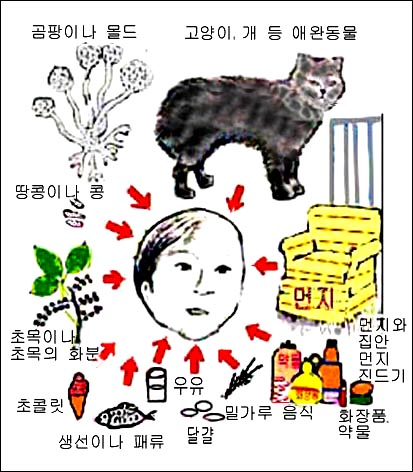
그림 3. 알레르기 질환을 유발시킬 수 있는 항원
개, 고양이 등 애완동물의 털, 비듬, 집 먼지 진드기(집 먼지 좀 진드기),곰팡이,몰드, 화분,약물, 생선이나 어패류, 우유와 우유 음식물,달걀, 밀가루 음식물화장품, 초콜릿, 견과류, 땅콩, 콩 등
알레르기를 비교적 더 흔히 유발시킬 수 있는 항원들이다.
심한 알레르기 비염이 있는 아이들에게 아데노이드 얼굴형(알레르기 안모)이 생길 수 있다.
“돌 이전 여아들이 바퀴벌레 똥, 쥐 비늘,개나 고양이 비늘, 집 먼지 진드기 등 알러젠 (항원)에 노출되면 3세 이전 천식발병률이
감소된다는 연구 결과가 나왔다” (Contemporary Pediatrics 6/19/3014).
바퀴벌레 Copyright ⓒ 2012 John Sangwon Lee, MD, FAAP
update 12/2021
생선이나 어패류, 우유와 우유 음식물,달걀, 밀가루 음식물, 초콜릿, 견과류, 땅콩, 콩 등에 의 해 생기는 알레르기를 예방하가 위헤 생후 4-6개월 부터 고형 음식물을 먹일 떼 부터 소량 먹이기 시작하면 그런 음식 물 알레르기 덜 생긴다고 하는 연구 결과가 나왔다.
사진으로 본 항원-Ⅱ
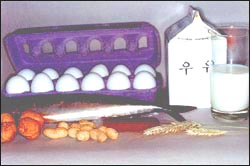
사진 4. 음식물 알레르기를 더 잘 유발시킬 수 있는 음식물
음식물 알레르기를 가장 흔히 일으킬 수 있는 음식물은 달걀, 우유, 메주 콩, 생선과 패류, 땅콩, 호도, 밀가루 등의 음식물이다.
Copyright ⓒ 2012 John Sangwon Lee, MD., FAAP
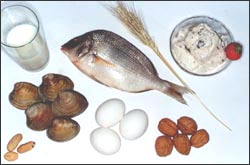
사진 5. 사진에서 보는 음식물로 인해 각종 알레르기 질환이 유발되기 쉽다. 우유, 우유 음식물, 생선, 밀, 조개 등 어패류, 달걀, 땅콩, 호두 등 견과류 등의 음식물은 비교적 더 흔히 알레르기를 유발시킬 수 있다.
Copyright ⓒ 2012 John Sangwon Lee, MD., FAAP

사진 6. 집 먼지, 집안 먼지 진드기로 알레르기성 비염, 기관지 천식, 아토피성 피부염 등 알레르기성 질환이 유발되기 쉽다.
Copyright ⓒ 2012 John Sangwon Lee, MD., FAAP
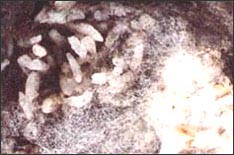
사진 7. 곰팡이나 몰드로 알레르기성 질환이 유발되기 쉽다. 집안 습한 곳에서 자라는 곰팡이와 몰드, 집안 화초 등에서 자라는 몰드로 알레르기 질환을 유발되기가 더 쉽다.
Copyright ⓒ 2012 John Sangwon Lee, MD., FAAP
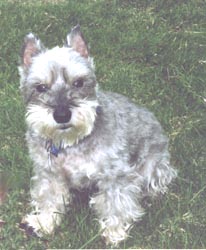
사진 8. 개나 고양이의 털, 비듬, 침 등으로 알레르기성 질환이 유발되기 쉽다.
Copyright ⓒ 2012 John Sangwon Lee, MD., FAAP
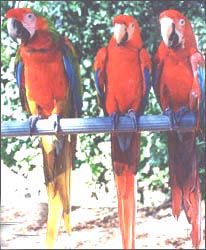
사진 9. 새의 깃털이나 비듬으로 알레르기성 질환이 유발되기 쉽고 알레르기 질환이 생길 수 있다. 새털이나 짐승의 털로 만든 옷, 베개, 이불 등으로 알레르기성 질환이 유발될 수 있다.
Copyright ⓒ 2012 John Sangwon Lee, MD., FAAP

사진 10. 고양이의 털, 비듬, 침으로 알레르기 질환이 비교적 흔히 유발될 수 있다. 헤밍웨이 기념관에 있는 고양이 사진.
Copyright ⓒ 2012 John Sangwon Lee, MD., FAAP
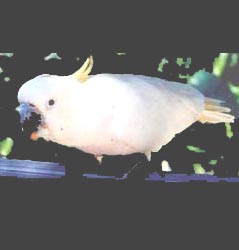
사진 11. 새의 깃털이나 비듬으로 알레르기 질환이 유발되기 쉽다.
Copyright ⓒ 2012 John Sangwon Lee, MD., FAAP

사진12. 각종 나무의 화분이나 래그위드의 꽃가루(풀의 화분)로 알레르기 질환이 유발되기 쉽다.
Copyright ⓒ 2012 John Sangwon Lee, MD., FAAP

사진13. 각종 나무의 화분이나 래그위드 등 풀의 화분으로 알레르기 질환이 유발되기 쉽다.
Copyright ⓒ 2012 John Sangwon Lee, MD., FAAP
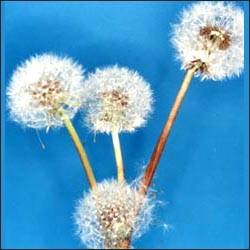
사진14. 두드러기 래그위드 등 잡초의 화분으로 알레르기 병이 유발되기 쉽다.
Copyright ⓒ 2012 John Sangwon Lee, MD., FAAP
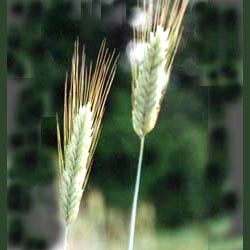
사진15. 밀 꽃이나 보리 꽃의 화분, 또는 그 음식물로 알레르기 질환이 유발되기 쉽다.
Copyright ⓒ 2012 John Sangwon Lee, MD., FAAP
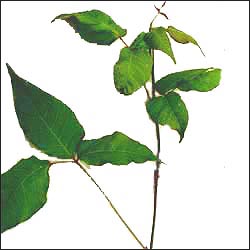
사진16. 옻나무의 줄기, 잎, 꽃가루 접촉으로 알레르기성 피부염이 생길 수 있다. 미 동북부 지역에서 자라는 옻나무의 줄기와 잎.
Copyright ⓒ 2012 John Sangwon Lee, MD., FAAP
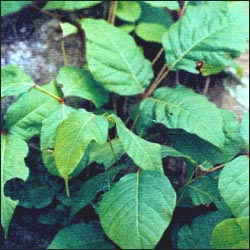
사진 17. 미 동북부 지역의 여름철 옻나무의 줄기와 잎의 사진
정원이나 산과 들에서 자라는 옻나무에 접촉될 때 옻나무 접촉성 피부염이 생길 수 있다. 그로 인해 육체적 정신적으로 많이 고생할 수 있고 경제적 손해도 많이 볼 수 있다. 옻나무가 어떻게 생겼는지 알고 그에 접촉되지 않게 하고 옻 접촉성 피부염에 걸리지 않게 예방한다.
Copyright ⓒ 2012 John Sangwon Lee, MD., FAAP
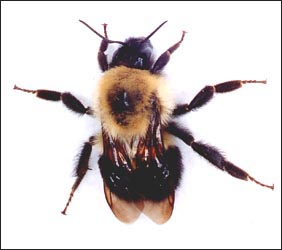
사진18. 벌, 거미, 모기 또는 각다귀 등 곤충에게 쏘이거나 물림으로 알레르기성 질환이 유발될 수 있다. 벌에 쏘여 아나필락시스가 생기면 사망할 수도 있다.
Copyright ⓒ 2012 John Sangwon Lee, MD., FAAP
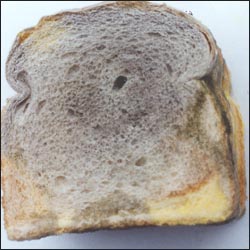
사진19. 밀 음식물에 글루텐 단백질 성분이 들어 있다. 글루텐으로 유발된 알레르기성 장염으로 고생하는 아이들도, 성인들도 많이 있다.
Copyright ⓒ 2012 John Sangwon Lee, MD., FAAP
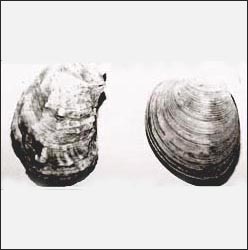
사진 20. 바다·민물 고기나 조개 등 어패류 음식물로 알레르기성 질환이 유발될 수 있다.
Copyright ⓒ 2012 John Sangwon Lee, MD., FAAP
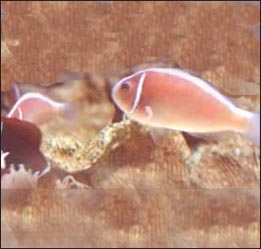
사진 21. 먹은 물고기로 알레르기성 질환이 유발될 수 있다.
Copyright ⓒ 2012 John Sangwon Lee, MD., FAAP

사진 24. 암컷 회충. 회충의 수컷은 암컷보다 훨씬 작다. 기생충증으로 알레르기성 질환이 유발될 수 있다.
Copyright ⓒ 2012 John Sangwon Lee, MD., FAAP
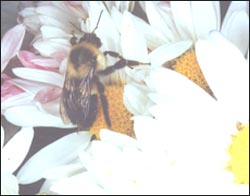
사진 25. 벌에 쏘이거나 초목의 화분으로 알레르기성 질환이 유발될 수 있다.
Copyright ⓒ 2012 John Sangwon Lee, MD., FAAP

사진 26. 산 바퀴벌레나 죽은 바퀴벌레로 알레르기성 비염, 천식 등 알레르기성 질환이 유발될 수 있다.
Copyright ⓒ 2012 John Sangwon Lee, MD., FAAP
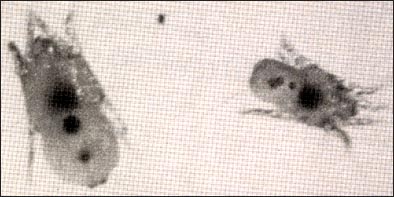
사진 127. 먼지 진드기 확대 사진
출처; 소스; www.gazoontite.com
알레르기 질환을 유발 시킬 수 있는 항원
- 알레르기 비염, 알레르기성 기관지 천식 등 알레르기 질환을 유발시킬 수 있는 항원은 우리 주위 곳곳에 산재되어 있다.
- 언제 어디서든지 항원이 기도 속으로 흡입될 수 있고 위장관이나 피부를 통해 몸속으로 들어 올 수 있다.
-
- 음식물
- 집먼지
- 집먼지진드기(집 먼지 좀 진드기)
- 바퀴벌레
- 죽은 곤충의 가루
- 곰팡이 또는 몰드
- 애완동물의 비듬, 털과 침
- 나무나 잡초의 꽃가루(화분)
- 약물 등은 대표적인 항원들이다.
- 항원이 피부층, 질강이나 구강의 점막층 및 위장관 점막층에 접촉될 때, 비강의 점막층 및 기관, 기관지 점막층 등 상·하기도의 점막층을 통해 인체 속으로 들어올 때,
- 약물을 주사로 맞거나 호흡기 내로 흡입하거나
- 항문이나 질 속에 넣어 치료하거나,
- 피부나 점막에 바를 때 알레르기 질환이 유발될 수 있다.
- 곤충에 물리거나 쏘이거나 죽은 곤충 가루가 기도 속으로 흡입되거나, 피부에 접촉되면 곤충 알레르기 질환이 생길 수 있다.
- 이런 항원에 접촉될 때 모든 아이들에게 알레르기 질환이 잘 생기진 않지만, 알레르기성 체질이 있는 아이들에게는 알레르기 질환이 더 잘 나타날 수 있다.
알레르기 질환을 더 잘 유발시킬 수 있는 항원
- 음식물: 우유·달걀·밀가루·옥수수·조개류·생선·견과류·딸기·초콜릿 등
- 콩류(두류): 메주콩·완두콩·땅콩 등
- 흡입물: 집 먼지·집 먼지 진드기(집 먼지 좀 진드기) ·깃털·케이폭·피레스럼(Pyrethrum) 등
- 곰팡이와 몰드: 집 안팎에서 자라는 곰팡이, 몰드 등
- 고양이·개· 말 등 짐승의 비듬‧ 털과 침‧ 새의 깃털 등
- 나무와 잡초의 꽃가루(화분) 등
- 그 외
그림으로 보는 항원 Ⅲ
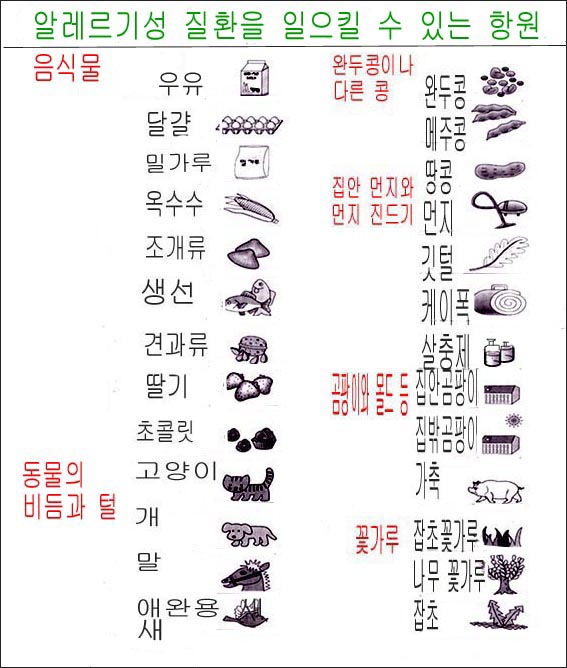
그림 27. 다행히 누구에게나 알레르기 질환이 생기지 않고 일부에게만 알레르기 질환이 생긴다. 평소에 세심히 살펴서 대처해야 한다. 알레르기 질환의 예방과 치료는 항원을 피하고 제거하는 것이다. Copyright ⓒ 2011 John Sangwon Lee, M.D.. FAAP
| 영아들에게 알레르기성 고용식(이유식) 음식물을 조기에 먹이면 음식물 알레르기 질환이나 그외 알레르기 질환이 더 잘 생길 수 있다고 주장했었으나 새로운 연구에 의하면 영아들에게 조기에 알레르기성 음식물을 먹이기 시작하면 생후 6세 경에 알레르기성 질환에 걸릴 위험성이 덜 한다는 연구 결과가 나왔다. 소스: NEJM June 2014 Vol. 13 No. 6 |
Allergens
- Allergens that can cause allergic diseases and specific hypersensitivity reactions are called allergens.
• Allergens are referred to as ‘antigens’ here.
• Allergens are everywhere around us.
• Allergic diseases are caused when antigens entering our body through the skin layer, eye conjunctiva, urogenital mucosa, respiratory mucosa, and digestive mucosa meet and an abnormal reaction occurs. Antigen I as a picture

Figure 3. Allergens that can cause allergic diseases Pet hair, dander, house dust mites (house dust mites), mold, mold, pollen, drugs, fish or shellfish, milk and milk food, eggs, flour food and cosmetics, chocolate, nuts, peanuts, beans, etc. Allergens that can cause allergies are relatively more common. Children with severe allergic rhinitis may develop adenoid facial features (allergic facial features). “Exposure to allergens (antigens) such as cockroach dung, rat scales, dog or cat scales, and house dust mites in pre-dollar girls may increase the risk of asthma before 3 years of age. Studies have shown that it decreases” (Contemporary Pediatrics 6/19/3014). Copyright ⓒ 2012 John Sangwon Lee, MD, FAAP

cockroach Antigen-II as seen in pictures
update 12/2021 To prevent allergies caused by fish, seafood, milk and milk foods, eggs, flour foods, chocolate, nuts, peanuts, soybeans, etc. Studies have shown that you are less likely to develop allergies.

Photo 4. Foods that may make you more prone to food allergies The most common foods that cause food allergies are eggs, milk, soybeans, fish and shellfish, peanuts, walnuts, and wheat flour. Copyright ⓒ 2012 John Sangwon Lee, MD., FAAP

Picture 5. The food you see in the picture is easy to cause various allergic diseases. Foods such as milk, milk foods, fish, wheat and shellfish, and nuts such as eggs, peanuts, and walnuts can cause allergies more often. Copyright ⓒ 2012 John Sangwon Lee, MD., FAAP

Photo 6. House dust and house dust mites are easy to cause allergic diseases such as allergic rhinitis, bronchial asthma, and atopic dermatitis. Copyright ⓒ 2012 John Sangwon Lee, MD., FAAP

Photo 7. Allergic diseases are easily induced by mold or mold. Molds and molds that grow in damp places in the house, molds that grow on house plants, etc. are more likely to cause allergic diseases. Copyright ⓒ 2012 John Sangwon Lee, MD., FAAP

Picture 8. Allergic diseases are easily caused by dog or cat hair, dander, and saliva. Copyright ⓒ 2012 John Sangwon Lee, MD., FAAP

Picture 9. Bird feathers or dander are prone to allergic diseases and can cause allergic diseases. Allergic diseases can be caused by clothes, pillows, and blankets made from bird or animal hair. Copyright ⓒ 2012 John Sangwon Lee, MD., FAAP

photo 10. Cat hair, dander, and saliva are relatively common causes of allergic diseases. A photo of a cat at the Hemingway Memorial. Copyright ⓒ 2012 John Sangwon Lee, MD., FAAP

Picture 11. Bird feathers or dander are prone to allergic diseases. Copyright ⓒ 2012 John Sangwon Lee, MD., FAAP

Picture 12. Allergic diseases are easily induced by pollen of various trees or pollen of ragweed. Copyright ⓒ 2012 John Sangwon Lee, MD., FAAP

Picture 13. Allergic diseases are easily induced by pollen of various trees or pollen of grass such as ragweed. Copyright ⓒ 2012 John Sangwon Lee, MD., FAAP

Picture 14. Pollen of weeds such as urticaria ragweed can easily cause allergic diseases. Copyright ⓒ 2012 John Sangwon Lee, MD., FAAP

Picture 15. Pollen of wheat or barley flowers, or their food, is easy to cause allergic diseases. Copyright ⓒ 2012 John Sangwon Lee, MD., FAAP

Picture 16. Allergic dermatitis can occur from contact with the stems, leaves and pollen of poison ivy. The trunk and leaves of the sumac tree growing in the northeastern United States. Copyright ⓒ 2012 John Sangwon Lee, MD., FAAP

Picture 17. A photograph of the trunk and leaves of a sumac tree in summer in the northeastern United States Sumac contact dermatitis can occur when contact with poison ivy growing in gardens or mountains and fields. As a result, you can suffer a lot physically and mentally, and you can see a lot of economic damage. Know what poison ivy looks like, avoid contact with it, and prevent poison ivy contact dermatitis. Copyright ⓒ 2012 John Sangwon Lee, MD., FAAP

Picture 18. Insect stings or bites such as bees, spiders, mosquitoes or gnats can cause allergic diseases. A bee sting can cause anaphylaxis, which can lead to death. Copyright ⓒ 2012 John Sangwon Lee, MD., FAAP

Picture 19. Wheat foods contain gluten protein. There are many children and adults who suffer from gluten-induced allergic enteritis. Copyright ⓒ 2012 John Sangwon Lee, MD., FAAP

Picture 20. Allergic diseases can be induced by food from sea or freshwater fish or shellfish. Copyright ⓒ 2012 John Sangwon Lee, MD., FAAP

Picture 21. Eating fish can cause allergic diseases. Copyright ⓒ 2012 John Sangwon Lee, MD., FAAP

Picture 24. female roundworm. Males of roundworms are much smaller than females. Parasitosis can cause allergic diseases. Copyright ⓒ 2012 John Sangwon Lee, MD., FAAP

Picture 25. Allergic diseases can be caused by bee stings or pollen from plants. Copyright ⓒ 2012 John Sangwon Lee, MD., FAAP

Picture 26. Live or dead cockroaches can cause allergic diseases such as allergic rhinitis and asthma. Copyright ⓒ 2012 John Sangwon Lee, MD., FAAP

Photo 127. Close-up of dust mites source; sauce; www.gazoontite.com Allergens that can cause allergic diseases
• Allergens that can cause allergic diseases such as allergic rhinitis and allergic bronchial asthma are scattered all around us.
• Anytime, anywhere antigen can be inhaled into the airways and enter the body through the gastrointestinal tract or skin.
o food o house dust
o House dust mites (house dust mites)
o Cockroaches
o dead insect powder
o Mold or mold
o Pet dander, fur and saliva o Pollen from trees or weeds o Drugs are representative antigens.
• When an antigen comes into contact with the skin layer, the vaginal cavity or the mucous membrane of the oral cavity and the mucous membrane of the gastrointestinal tract;
• The drug is given by injection or inhaled into the respiratory tract;
• Put it in the anus or vagina for treatment;
• May cause allergic diseases when applied to the skin or mucous membranes.
• Insect bites, stings, or dead insect powders inhaled into the airways or in contact with the skin can cause insect allergy.
• Although not all children are prone to allergies when they come in contact with these allergens, children with allergies are more likely to develop allergies.
Allergens that may predispose you to allergic disease
• Food: milk, eggs, flour, corn, shellfish, fish, nuts, strawberries, chocolate, etc.
• Beans (soybeans): soybeans, peas, peanuts, etc.
• Inhalation: house dust, house dust mites (house dust mites), feathers, kapok, Pyrethrum, etc.
• Mold and mold: mold, mold, etc. growing inside and outside the house
• Cats, dogs, horses, etc. Animal dander, fur and saliva, feathers of birds, etc.
• Pollen (pollen) from trees and weeds, etc.
• etc
Antigen in the picture Ⅲ

Figure 27. Fortunately, not everyone develops allergic diseases, and only a few do. You have to look closely and deal with it on a regular basis. Prevention and treatment of allergic diseases is to avoid and eliminate antigens. Copyright ⓒ 2011 John Sangwon Lee, M.D., FAAP
It has been argued that early feeding of allergenic solid foods to infants may increase the risk of food allergy and other allergic diseases, but a new study found that if infants were fed allergenic foods early, they started feeding them around 6 years of age. Studies have shown that people are less likely to develop allergic diseases. Source: NEJM June 2014 Vol. 13 No. 6
출처 및 참조 문헌 Sources and references
- NelsonTextbook of Pediatrics 22ND Ed
- The Harriet Lane Handbook 22ND Ed
- Growth and development of the children
- Red Book 32nd Ed 2021-2024
- Neonatal Resuscitation, American Academy Pediatrics
- A SUPPLEMENT TO PEFDIATRICS, SYNAPSIS BOOK, BEST ARTICLES RELEVANT TO PEDIATRIC ALEERGY , ASTHMA, IMMUNULOGY, PEDIATRICS OFFICIAL JOURNAL OF THE AMERICAN ACADEMY.12/2019
- www.drleepediatrics.com 제1권 소아청소년 응급 의료
- www.drleepediatrics.com 제2권 소아청소년 예방
- www.drleepediatrics.com 제3권 소아청소년 성장 발육 육아
- www.drleepediatrics.com 제4권 모유,모유수유, 이유
- www.drleepediatrics.com 제5권 인공영양, 우유, 이유식, 비타민, 미네랄, 단백질, 탄수화물, 지방
- www.drleepediatrics.com 제6권 신생아 성장 발육 육아 질병
- www.drleepediatrics.com제7권 소아청소년 감염병
- www.drleepediatrics.com제8권 소아청소년 호흡기 질환
- www.drleepediatrics.com제9권 소아청소년 소화기 질환
- www.drleepediatrics.com제10권. 소아청소년 신장 비뇨 생식기 질환
- www.drleepediatrics.com제11권. 소아청소년 심장 혈관계 질환
- www.drleepediatrics.com제12권. 소아청소년 신경 정신 질환, 행동 수면 문제
- www.drleepediatrics.com제13권. 소아청소년 혈액, 림프, 종양 질환
- www.drleepediatrics.com제14권. 소아청소년 내분비, 유전, 염색체, 대사, 희귀병
- www.drleepediatrics.com제15권. 소아청소년 알레르기, 자가 면역질환
- www.drleepediatrics.com제16권. 소아청소년 정형외과 질환
- www.drleepediatrics.com제17권. 소아청소년 피부 질환
- www.drleepediatrics.com제18권. 소아청소년 이비인후(귀 코 인두 후두) 질환
- www.drleepediatrics.com제19권. 소아청소년 안과 (눈)질환
- www.drleepediatrics.com 제20권 소아청소년 이 (치아)질환
- www.drleepediatrics.com 제21권 소아청소년 가정 학교 간호
- www.drleepediatrics.com 제22권 아들 딸 이렇게 사랑해 키우세요
- www.drleepediatrics.com 제23권 사춘기 아이들의 성장 발육 질병
- www.drleepediatrics.com 제24권 소아청소년 성교육
- www.drleepediatrics.com 제25권 임신, 분만, 출산, 신생아 돌보기
- Red book 29th-31st edition 2021
- Nelson Text Book of Pediatrics 19th- 21st Edition
- The Johns Hopkins Hospital, The Harriet Lane Handbook, 22nd edition
- 응급환자관리 정담미디어
- Pediatric Nutritional Handbook American Academy of Pediatrics
- 소아가정간호백과–부모도 반의사가 되어야 한다, 이상원 저
- The pregnancy Bible. By Joan stone, MD. Keith Eddleman, MD
- Neonatology Jeffrey J. Pomerance, C. Joan Richardson
- Preparation for Birth. Beverly Savage and Dianna Smith
- 임신에서 신생아 돌보기까지. 이상원
- Breastfeeding. by Ruth Lawrence and Robert Lawrence
- Sources and references on Growth, Development, Cares, and Diseases of Newborn Infants
- Emergency Medical Service for Children, By Ross Lab. May 1989. p.10
- Emergency care, Harvey Grant and Robert Murray
- Emergency Care Transportation of Sick and Injured American Academy of Orthopaedic Surgeons
- Emergency Pediatrics A Guide to Ambulatory Care, Roger M. Barkin, Peter Rosen
- Quick Reference To Pediatric Emergencies, Delmer J. Pascoe, M.D., Moses Grossman, M.D. with 26 contributors
- Neonatal resuscitation Ameican academy of pediatrics
- Pediatric Nutritional Handbook American Academy of Pediatrics
- Pediatric Resuscitation Pediatric Clinics of North America, Stephen M. Schexnayder, M.D.
-
Pediatric Critical Care, Pediatric Clinics of North America, James P. Orlowski, M.D.
-
Preparation for Birth. Beverly Savage and Dianna Smith
-
Infectious disease of children, Saul Krugman, Samuel L Katz, Ann A.
- 제4권 모유, 모유수유, 이유 참조문헌 및 출처
- 제5권 인공영양, 우유, 이유, 비타민, 단백질, 지방 탄수 화물 참조문헌 및 출처
- 제6권 신생아 성장발육 양호 질병 참조문헌 및 출처
- 소아과학 대한교과서
Copyright ⓒ 2014 John Sangwon Lee, MD., FAAP
“부모도 반의사가 되어야 한다”-내용은 여러분들의 의사로부터 얻은 정보와 진료를 대신할 수 없습니다.
“The information contained in this publication should not be used as a substitute for the medical care and advice of your doctor. There may be variations in treatment that your doctor may recommend based on individual facts and circumstances.
“Parental education is the best medicine.